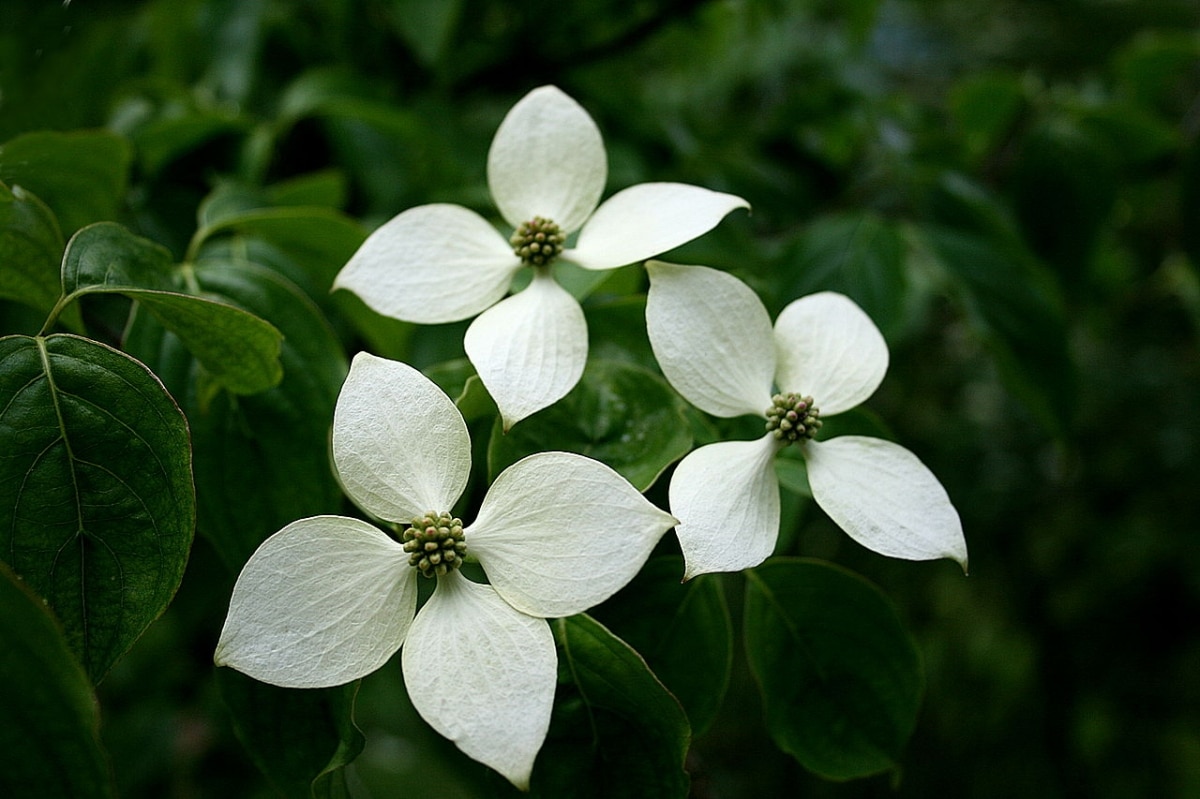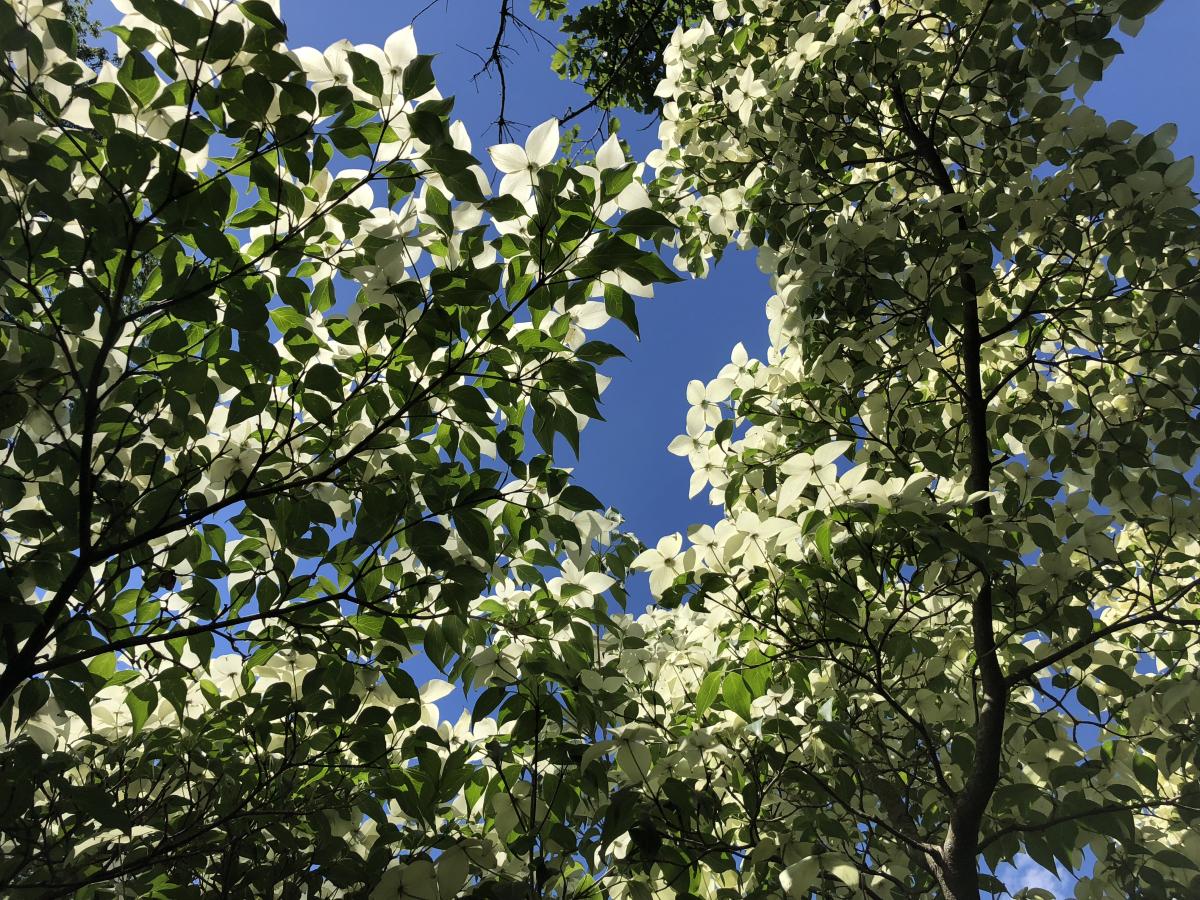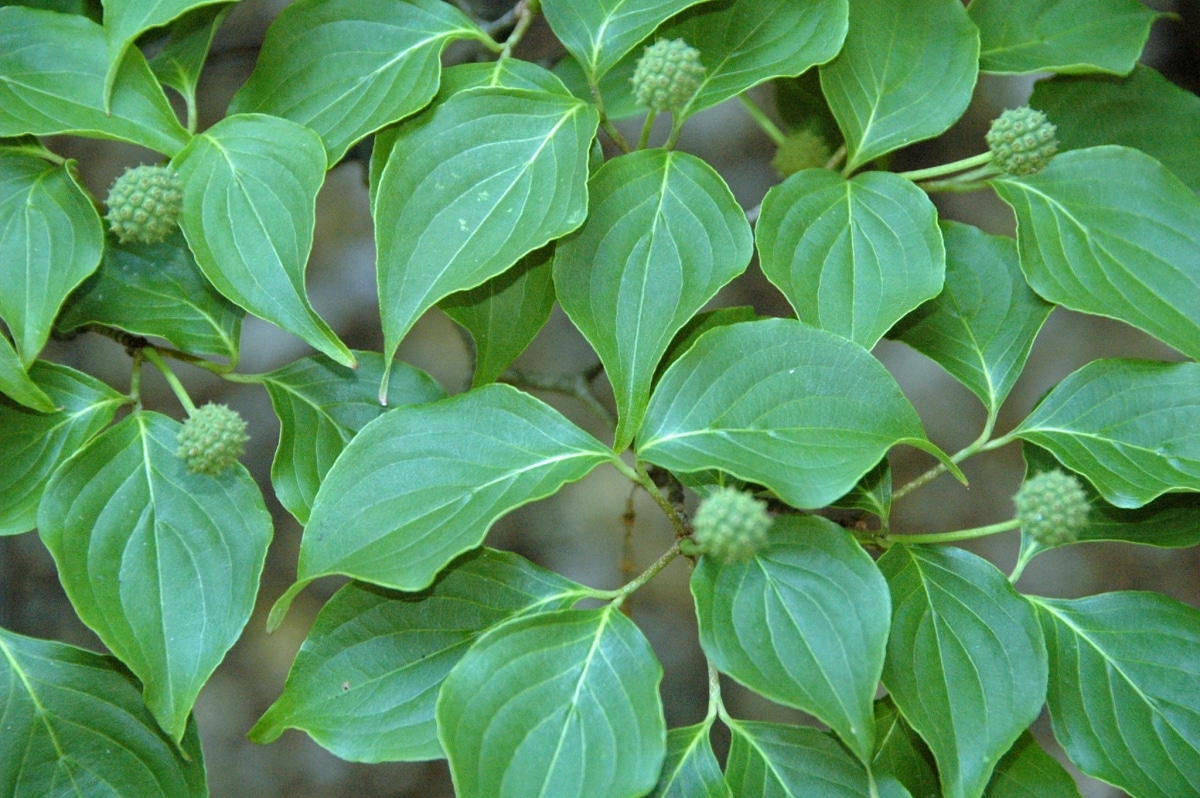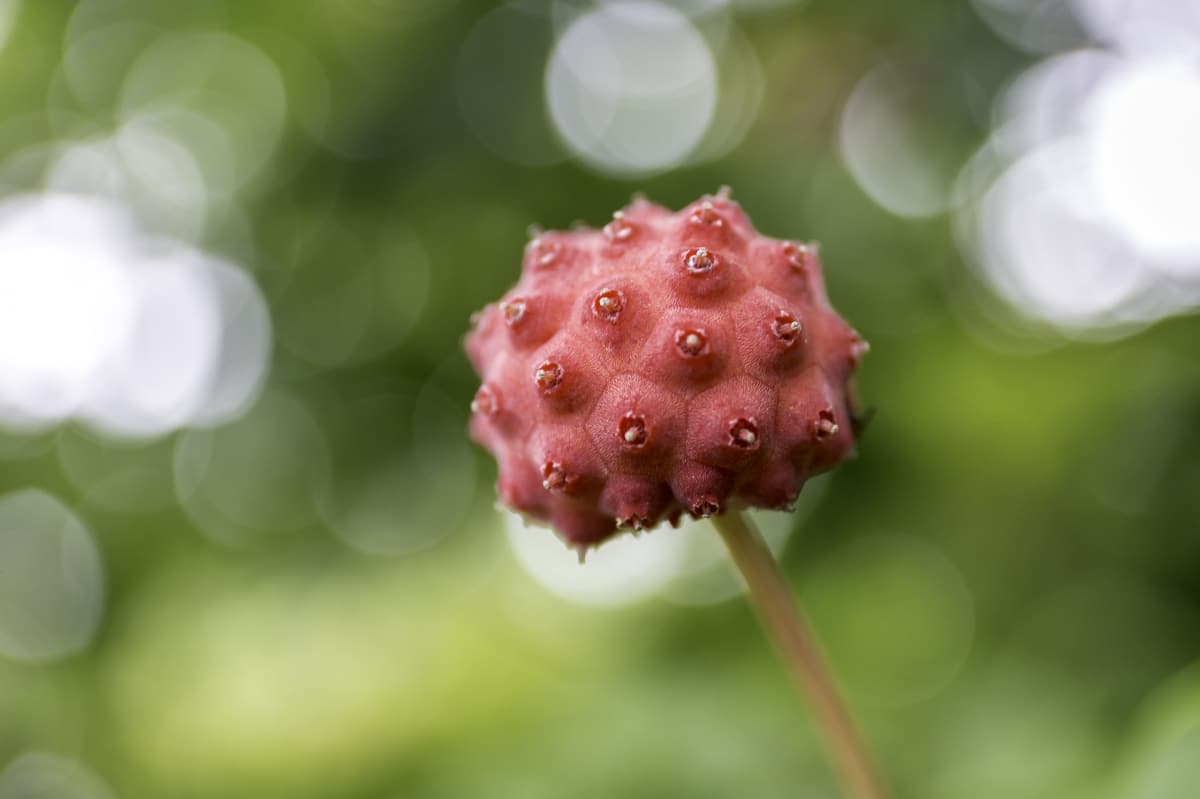
Image - Wikimedia / Jean-Pol GRANDMONT
Dogwoods are a group of plants that are characterized by having flowers with four bracts (false petals), large and white or pink, as well as a magnificent autumn color. But since this is a blog about trees, we are going to tell you about the Cornus kousa, for me one of the most decorative species, but also more delicate when the weather is not entirely favourable.
So, what are the needs of this dogwood? How can we decorate a garden with it? Is it possible to keep it in a pot? These and other questions will be answered below.
Origin and characteristics of Cornus kousa

Image - Wikimedia / Famartin
The Kousa Dogwood it is a deciduous tree originally from East Asia, to be more exact, from Japan, China and Korea. Reaches a height of between 8 and 12 meters, and over time it develops a rounded and wide crown, reaching about 4 meters. Its leaves are simple, about 10 centimeters long, and green, although they turn orange and/or reddish in autumn.
It blooms throughout the spring. of its branches a large number of white flowers sprout They measure approximately 4 centimeters wide. And once they are pollinated, the fruits ripen, which are pink berries about 3 centimeters. These are edible, and can be harvested in late summer or fall.
For what do you use it?
Our protagonist has several uses, which are:
- Ornamental: either as an isolated specimen or in groups, it is a tree that greatly embellishes a garden, and what's more, it does so practically all year round, first filling itself with flowers in spring, and then turning red in autumn.
- Bonsai: all dogwoods are plants that are worked as bonsai. Hardy Unlike other showy flowering trees, like the flamboyant for example, they flourish without any problems when grown in bonsai trays.
- Edible: Its berries are used to make wine.
How to take care of the Kousa dogwood?
If you want to enjoy a Cornus kousa, first you have to take into account their needs:
- Suitable climate: tempered; that is, with mild temperatures in spring and until autumn, and with moderate frosts and snowfalls in winter. Likewise, the environmental humidity must be high, since it suffers a lot when it is low (the leaves dehydrate).
- Land: acidic or slightly acidic (it must have a pH between 4 and 6.5), rich in organic matter and with excellent drainage. It is a tree that does not tolerate excess water in its roots.
- showers: must be recorded throughout the year.
And now let's see how to take care of it:
Location

Image - Wikimedia / Famartin
It has to be placed outside, but in a sunny or shady place? It will depend a lot on the weather: if it is temperate with mild summers and cold winters, it can be exposed to the sun if the environmental humidity is high. On the other hand, if it is warm temperate, with temperatures above 35ºC in summer and with very light frosts in winter, as is the case in several points on the Mediterranean coast for example, it will be preferable to have it in semi-shade or shade, less during the hot months because the degree of insolation can be very high and, consequently, the leaves can burn.
Soil or substrate
As we mentioned, the soil must have a pH between 4 and 6.5. What's more, must be fertile and light, since if it is very compact and/or heavy, the roots do not grow well, and they can even suffocate due to poor air circulation in that soil. Therefore, if the land we have is not suitable, we have to improve it, either by adding blond peat to acidify it and/or by installing a drainage system. In any case, and since it tolerates pruning, if we have clay soil, it is best to plant it in a pot, because even if we make a large hole, sooner or later the roots would touch the original soil, and then the problems would begin. .
What substrate to put if it is going to be in a pot? This is easy: any specific soil for acid plantsas this of Flower, or coconut fiber (for sale here). If you are going to work it as a bonsai, we recommend mixing 70% akadama with 30% kanuma.
Irrigation
El Cornus kousa does not resist drought. In the event that it does not rain, it should generally be watered 2-3 times a week in summer (that is, every 2 or 3 days), and once or twice a week the rest of the year. But this will depend a lot on the climate, the location, and whether it is in the ground or in a pot, since it will not be watered with the same frequency in the south of Mallorca (where we can spend up to six months without seeing rain), as in Galicia (where it rains much more often than on the Mediterranean island).
If you have doubts, we recommend you check the humidity of the soil, inserting a wooden stick to the bottom. In case it comes out with a lot of soil attached, it will mean that it is not necessary to water yet. Also, if we have it in a pot, another way to know if it has to be watered or not is to take it once it has been watered, and again after a few days. Since dry soil weighs less than wet soil, this difference in weight will serve as a guide.
Subscriber

Image - Flickr / James St. John
From spring to late summer it is advisable to pay with fertilizers such as chicken manure, compost, or guano. Although if it is in a pot, it is preferable to use specific liquid fertilizers for acid plants, such as this from Battle for example. But yes, follow the instructions for use so that problems do not arise.
Pruning
If we are going to have it in the garden, I do not recommend pruning it. The beauty of this tree is its size, its elegance. But if you have dry branches, then yes we can remove them.
Things change when you're going to have it in a pot, either because you don't have a garden, because the soil isn't right, or because you simply feel like it. In this case, pruning is necessary. This will be done at the end of winter or in autumn, and will consist of:
- Remove dry and broken branches.
- Cut back any that grow too tall.
- Give the cup an oval shape.
Transplant
It will be done at the end of winter, before the yolks begin to "swell" or shortly thereafter. But yes, it will only be removed from the pot if it has rooted well; that is, if the roots come out through the drainage holes and/or if when trying to remove it, the root ball comes out whole without falling apart.
Multiplication

Image – Wikimedia/Raphael Andres
It multiplies by seeds in winter, since they have to go cold before germinating, and by cuttings in spring.
Rusticity
It resists frosts of up to -18ºC as long as they are not late, since once the weather begins to improve it immediately sprouts, and in the event of a sudden drop in temperature it has a hard time.
If it is in the shade and it does not lack water, it will also withstand a heat wave with values of up to 38ºC if they are recorded in a timely manner.

Image - Wikimedia / Famartin
What did you think of the Cornus kousa?
Very interesting article, thanks.
As a curiosity, I have two small cornus kousa in a pot (about 40-50 cm.). I went on vacation for a week, in the middle of a heat wave in Madrid (first week of August 2022), and the irrigation system I had left failed.
I expected the worst when I returned, but while other plants have had a very bad time or have even dried up (a camellia), the dogwoods have not only endured as champions but have even improved their appearance and foliage (which makes me doubt if you were watering them too much).
I am thinking of transplanting one of the dogwoods into soil, which I think is adequate in terms of acidity and texture, as well as location. I will study the best time for transplanting and for next year I will improve the self-irrigation system so as not to risk it.
Greetings.
Hello Raul.
Thank you very much for telling your experience.
I found it very interesting, because I also have a dogwood (not the kousa, but another variety) where I live -Mallorca- and the truth is that it has a bit of a hard time. Perhaps the kousa is more resistant.
A greeting.